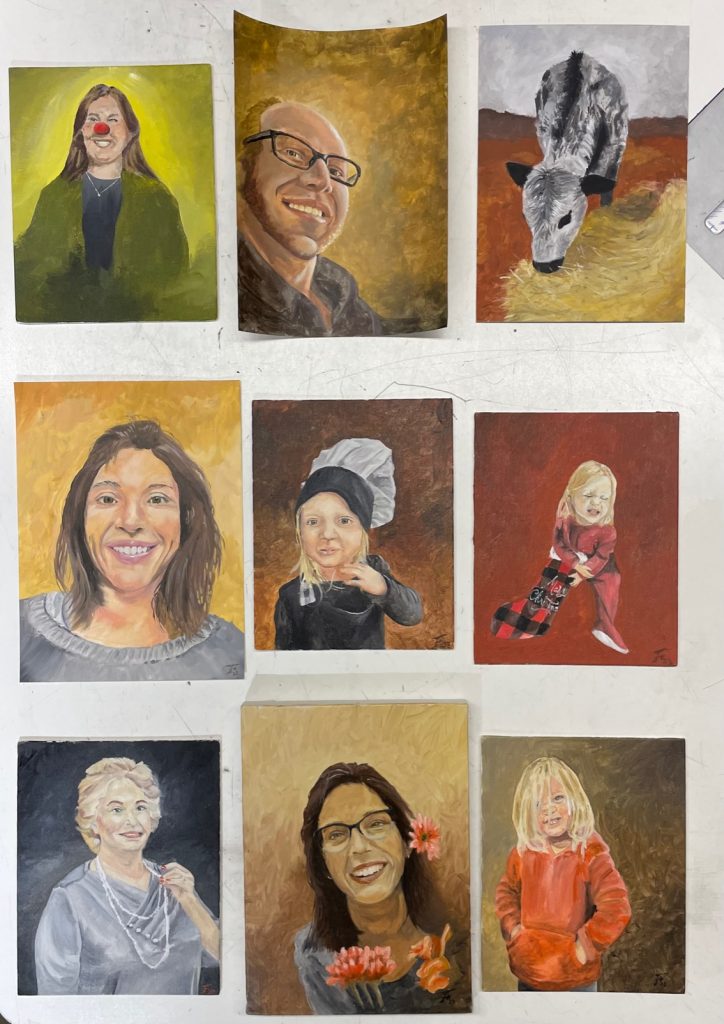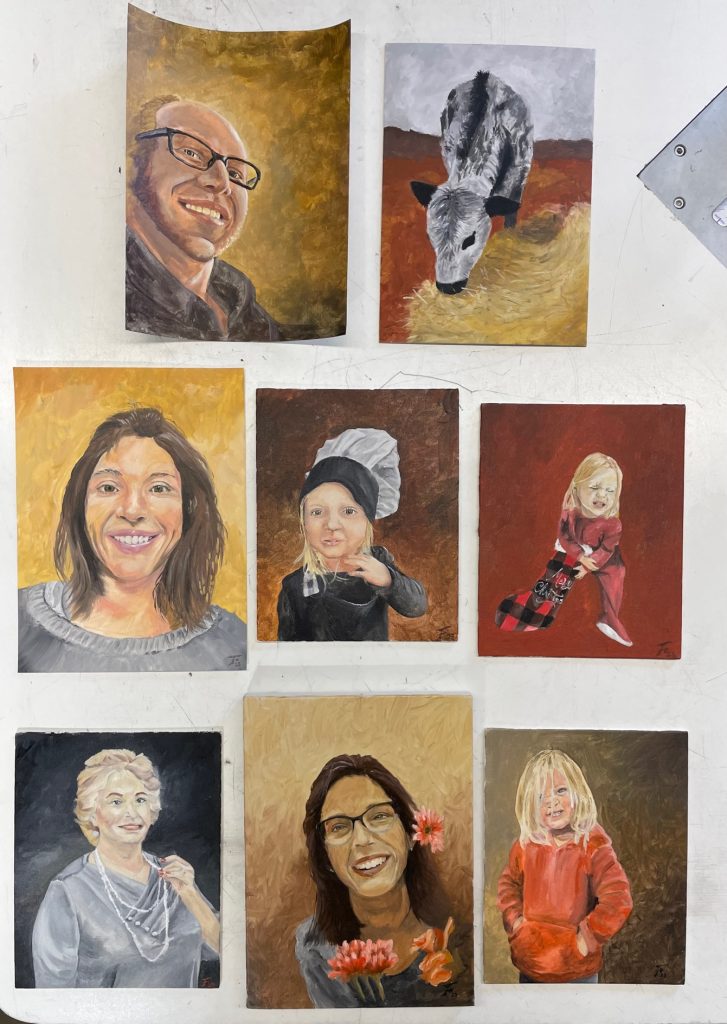
All of the paintings above were created with a different line and brand of paint, for testing purposes.
Here at the Art Supply House, we try to offer the best possible value – balancing quality and price.
As part of that process, we test the different options we have access to through our suppliers and try to find that value sweet spot.
We haven’t done that with oil paints, so as we consider revamping the section, it was time to bring them in and actually test them out.
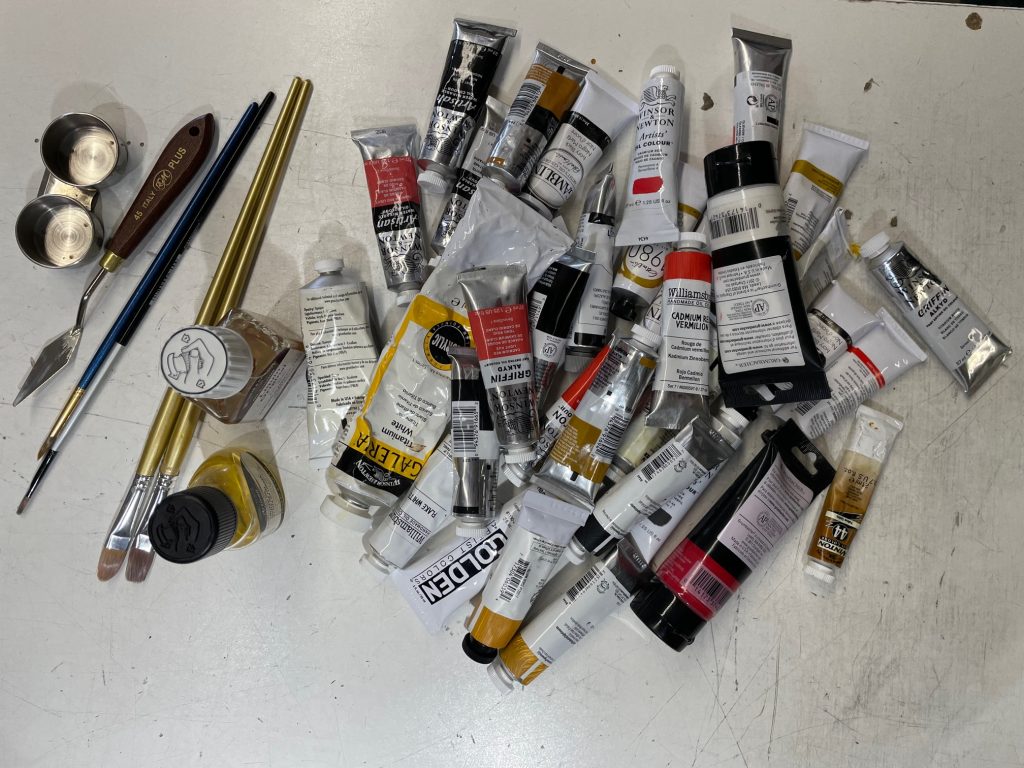
We chatted with some of our customers whose opinion we value and asked for recommendations to build out a list of brands and lines to test out.
To make it a true test, it needed to be more than just color swatches, so we chose to work from the limited Zorn palette. Then it was time to look through our personal paint stashes and order the tubes of missing paint for a fair test.
We chose 7 different oil paints to test and used 2 different acrylics as a comparison.
While the paints were arriving it was time to prep the paintings. We traced out diamond color swatches (yellow ochre at the top, red on the left side, black on the bottom and a tint of all the mixes on the right side.)

Then choosing photos to paint portraits from, transfer those to the canvas, and generally get ready.

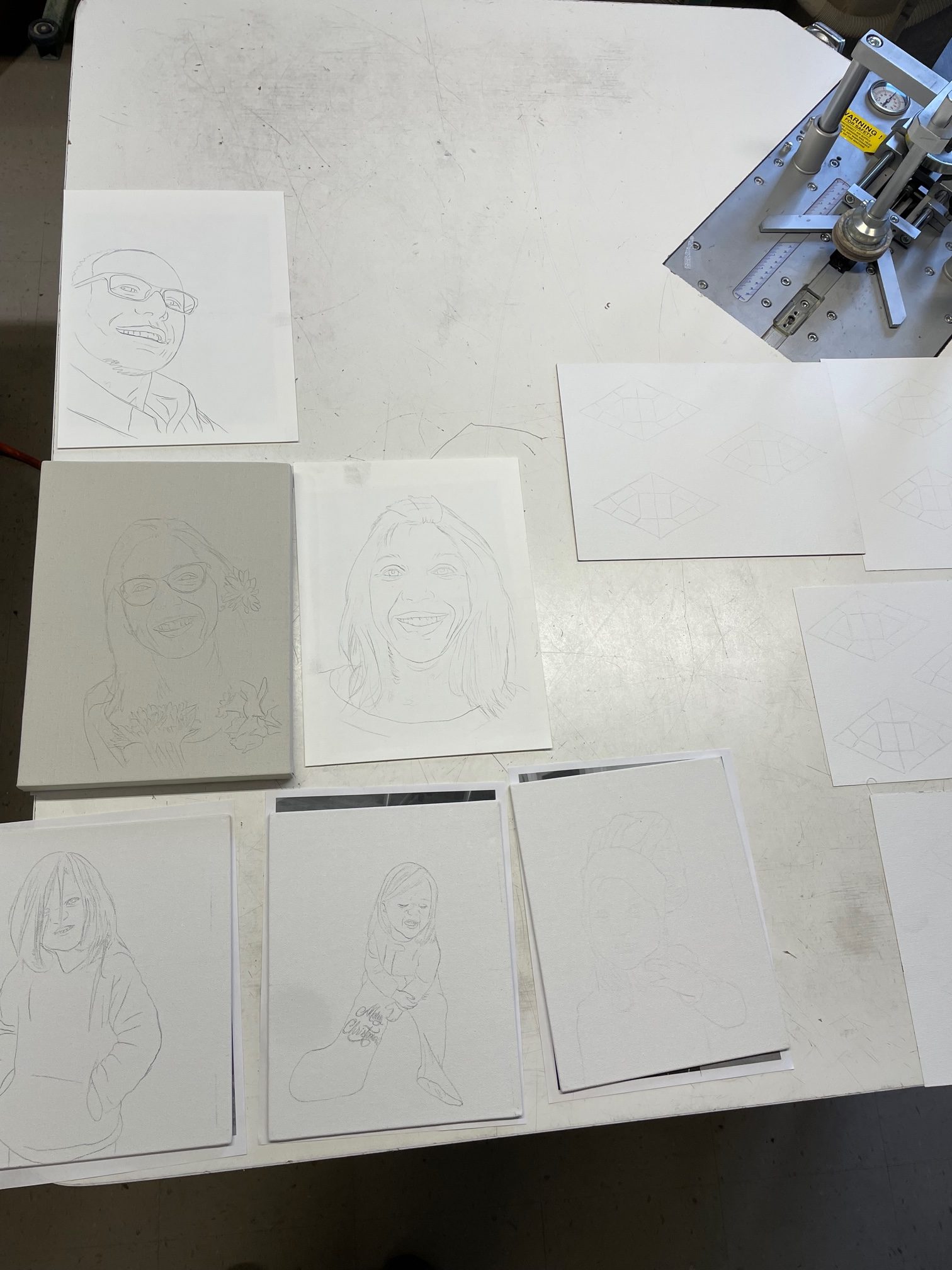
Part of the research during the waiting process was comparing the pigments in the different paints. The pigment is more accurate than the name on the tube, so this lets us have a “truer” comparison.
When the lines offered Flake White and Vermillion, we chose those colors (to match the original Zorn palette colors) and otherwise substituted Titanium White and Cadmium Red Light.
| Flake/ Titanium White | Yellow Ochre | Vermillion/ Cadmium Red Light | Ivory Black | |
| misc acrylic | PW6 | PY73 | PR170,PY83,PW6, PY74,PBk9 | PBk9 |
| Golden Open Acrylics | PW6 | PY43 | PR108 | PBk9 |
| Winsor & Newton Artisan Oils | PW6, PW4 | PY42 | PR108 | PBk9 |
| Winsor & Newton Winton Oils | PW6, PW4 | PY42 | PW6,PO36,PR170 | PBk9 |
| Gamblin 1980 Oils | PW6 | PY43 | PR108, PR188 | PBk9 |
| Winsor & Newton Artist Oils | PW6, PW4 | PY43 | PR108 | PBk9 |
| Gamblin Artist Oils | PW6 | PY43 | PR108 | PBk9 |
| WilliamsBurg Oils | PW1 | PY43 | PR108 | PBk9 |
| Winsor & Newton Griffin Alkyd Fast Dry Oils | PW6 | PY43 | PO73, PR188 | PBk9 |
The paints all arrived and it was time to paint. Over the course of about 2.5 weeks we chipped away at our painting list. The general goal was to paint from “lowest quality” paint to “highest quality.”
(After completing this cycle, we actually jumped back and completed a quick still life painting to test out the student grade paints with a fresh feeling for the professional quality ones.)
For each paint, we painted a color swatch and portrait in one sitting. We didn’t spend more than a couple hours on the process for each one. This was long enough to get a good feel for how the paint handled without spending too much time on the process.
To help maintain consistency, we limited other variables in the process. The two acrylics only used water as a thinner. The Winsor & Newton Artisan water mixable used the water mixable linseed as a medium. All of the other oils used Winsor & Newton’s Liquin Original as a medium and Gamsol to clean the brushes.
Though we started out with a larger stash of brushes available, only 5 of them were used in addition to a palette knife.
Here are the color swatches.
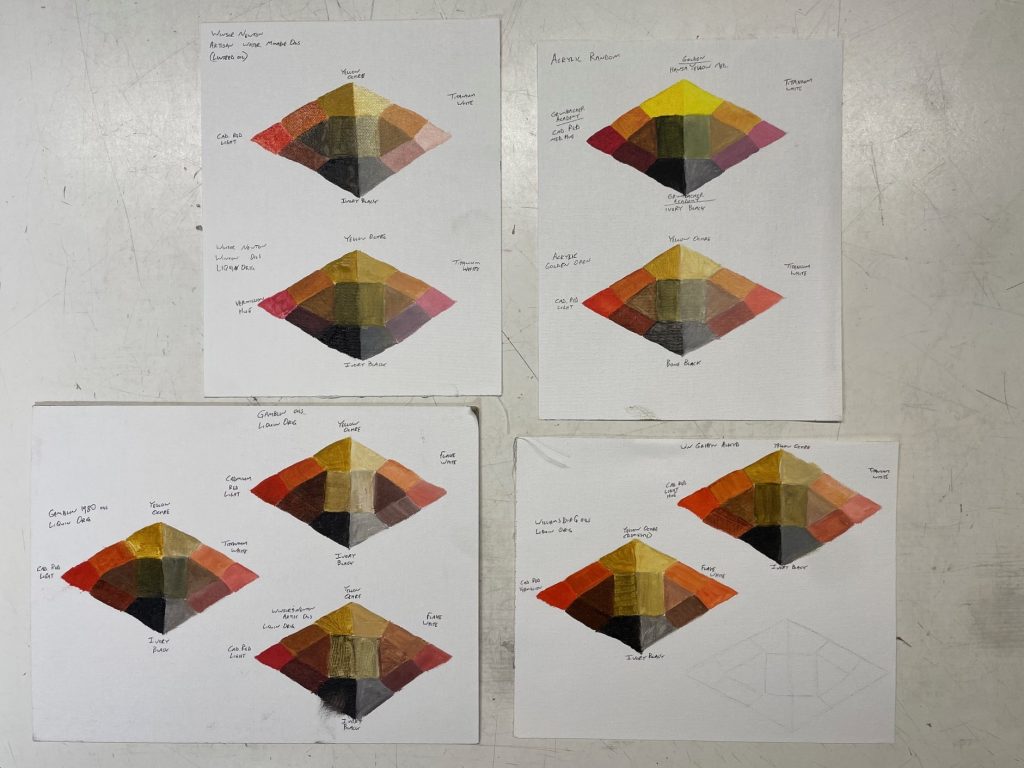
Here are each of the paintings, the palette, and the brushes used to create them.
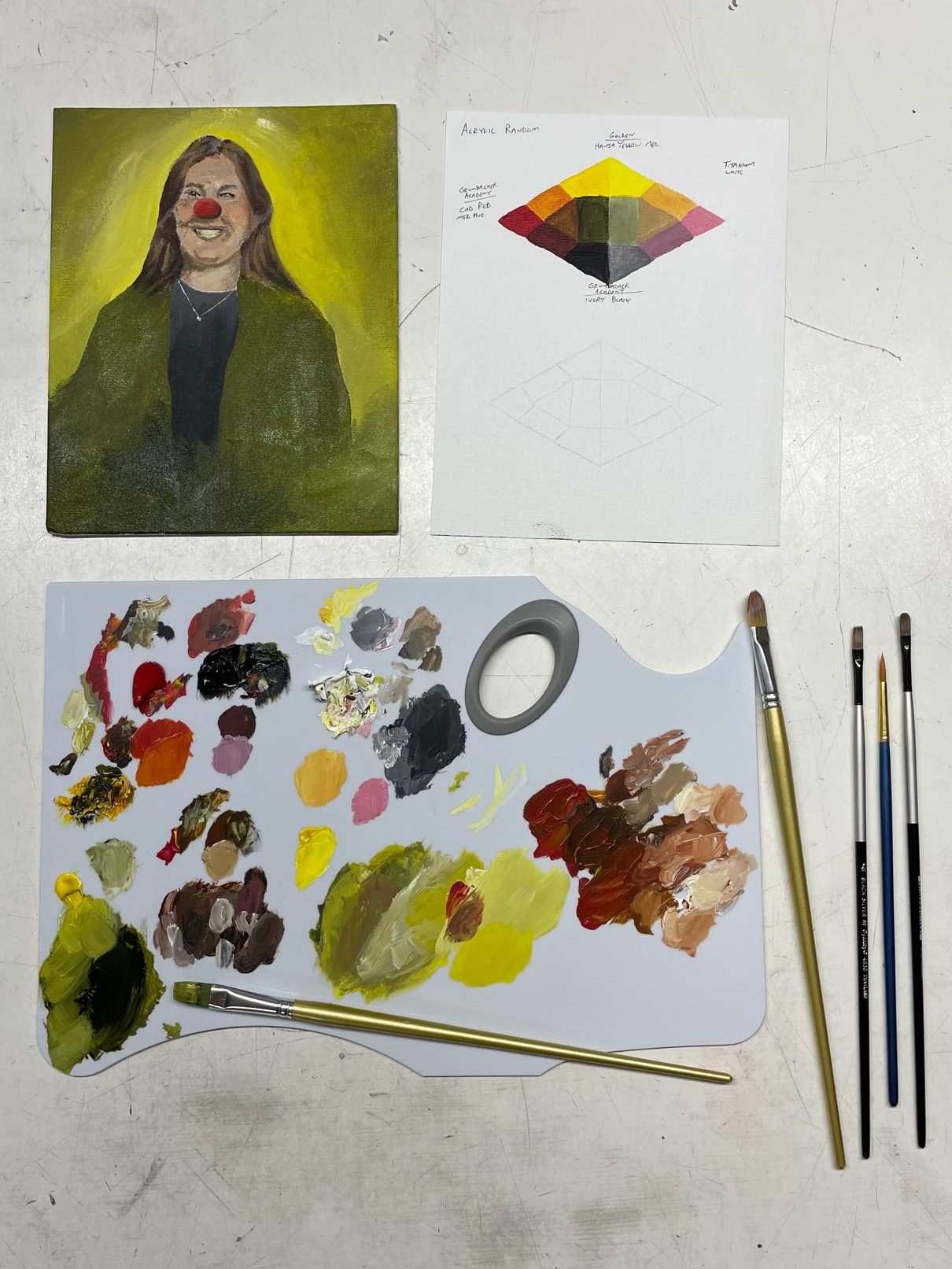

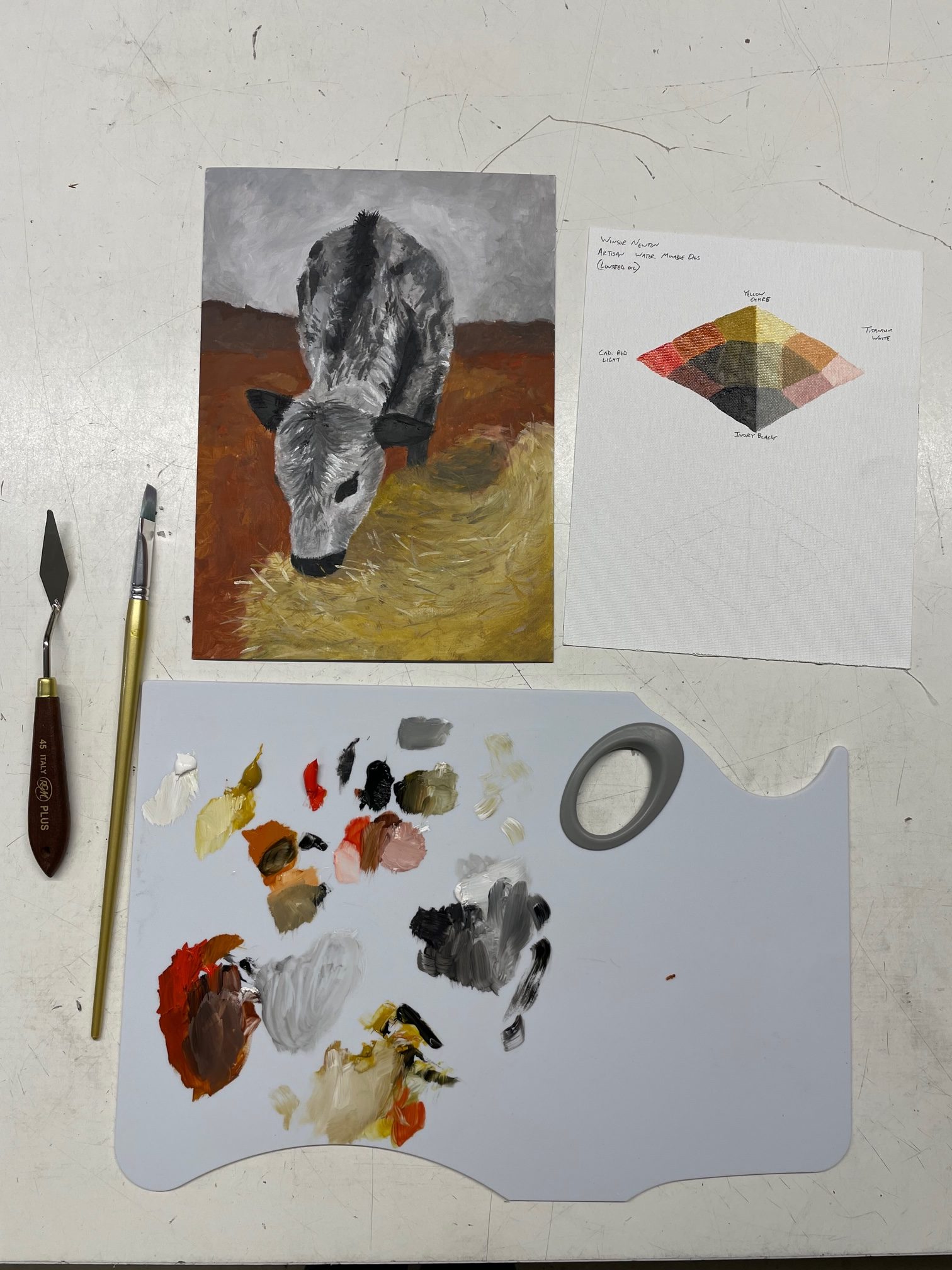
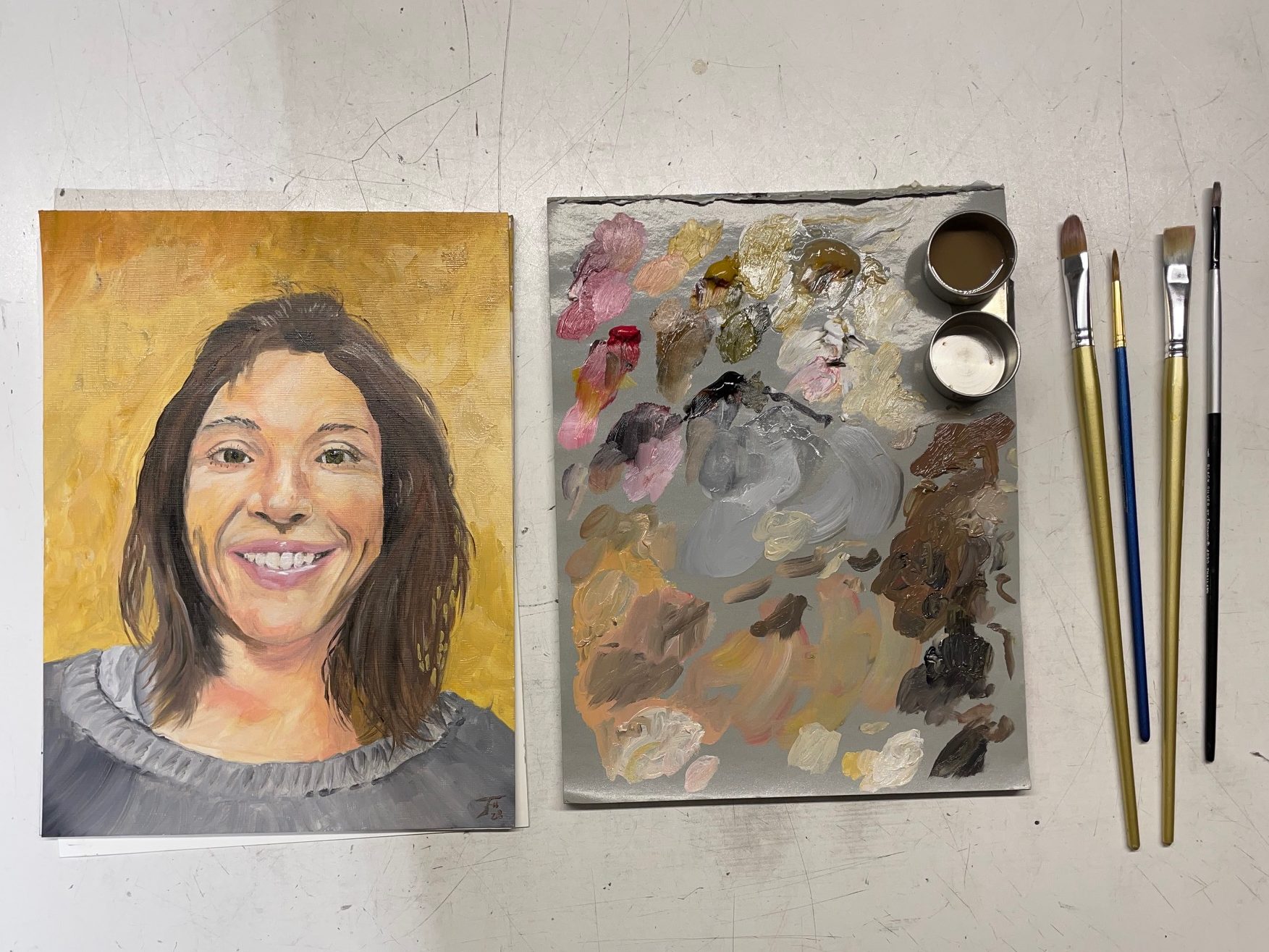

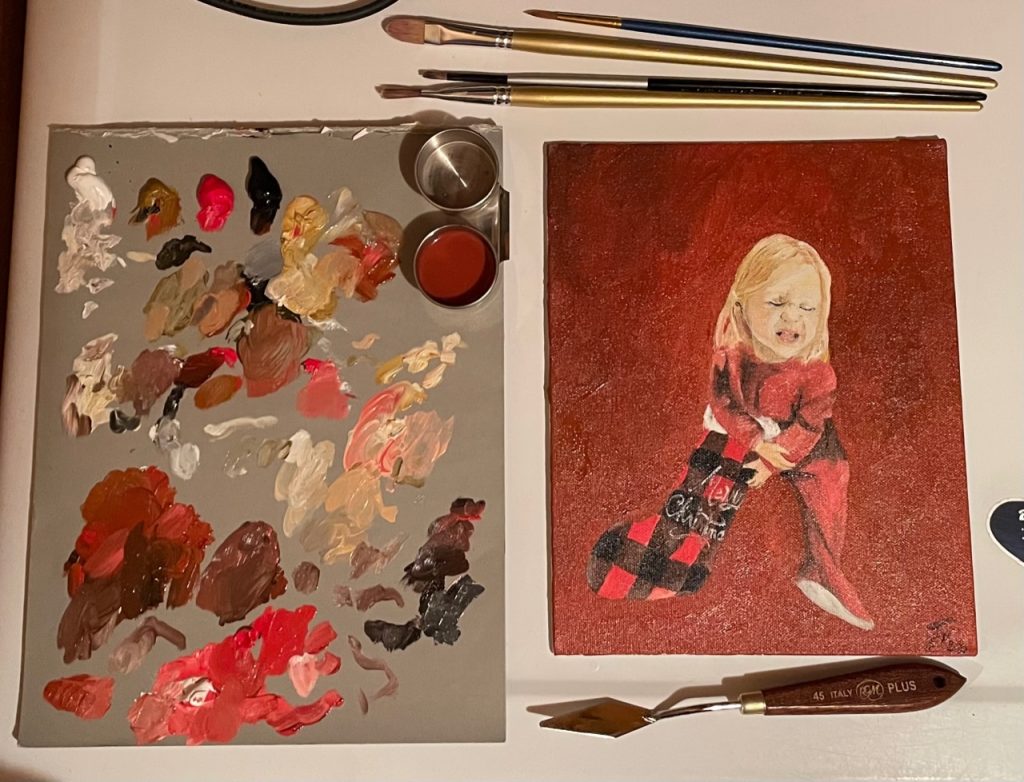

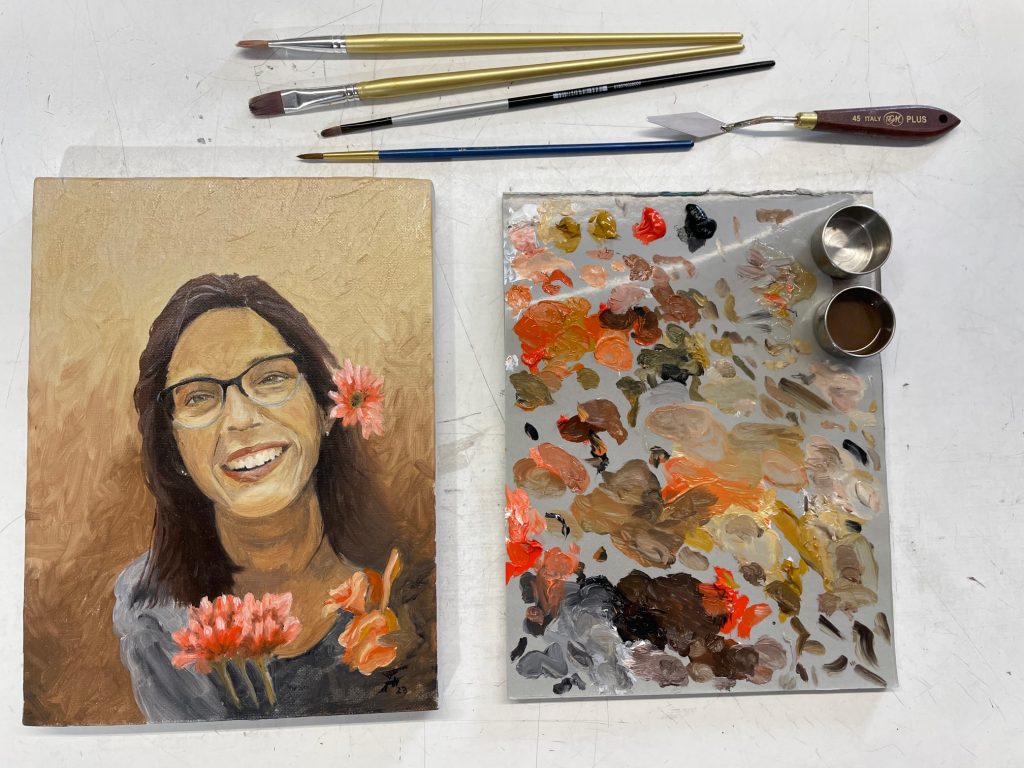
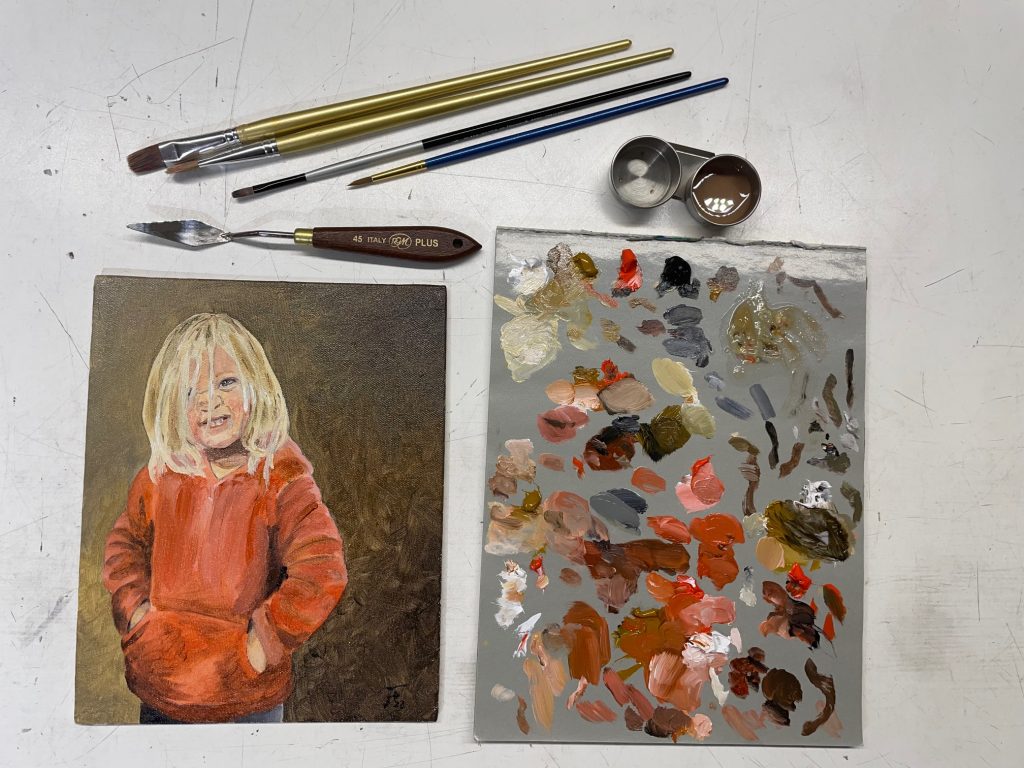
The last two paintings were completed in the same day. The next morning we painted a quick still life to compare the feel of the Gamblin 1980 with the fresh memory of using the WilliamsBurg.

It was eye-opening to compare the different lines of paints in a side-to-side fashion. We were reminded about some of the pros and cons of the different materials and have a much better understanding of what will provide the best value to our different customers.
Want to see what we decided, ultimately? You’ll have to swing by the shop to find out! We will make sure to have something on hand for everyone from hobbyists to pros!
Curious about the working set-up? Here’s a look behind the scenes.
